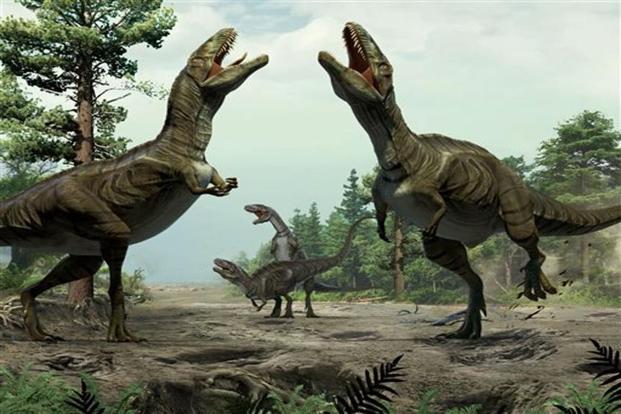
Volcanoes ‘triggered dawn of dinosaurs’? Huge pulses of volcanic activity are likely to have played a key role in triggering the end-Triassic mass extinction some 200 million years ago, which set the scene for the rise and age of the dinosaurs, a new study suggested Monday.
One of Earth’s most severe known extinction events, the Triassic extinction resulted in the widespread loss of land and sea species, including large crocodile-like reptiles and several marine invertebrates, as well as huge changes in land vegetation.
While it remains a mystery why the dinosaurs survived this event, they went on to fill the vacancies left by the now extinct wildlife species, alongside early mammals and amphibians.
This mass extinction is suggested to have coincided with and been caused by one of the largest known episodes of volcanic activity in Earth’s history, which might have occurred in pulses and covered a huge area, across four continents, representing the Central Atlantic Magmatic Province (CAMP).
In the new study, researchers from the Oxford University worked in collaboration with the Universities of Exeter and Southampton to examine sediments deposited at the same time as CAMP from four continents for fluctuations in mercury, which is emitted as a gas from volcanoes.
The mercury gas was spread globally through the atmosphere, before being deposited in sediments. Any sediments left during a large volcanic event would therefore be expected to have unusually high mercury content.
The team sourced six sediment deposits from Britain, Austria, Argentina, Greenland, Canada and Morocco, and had their mercury levels analysed.
Five of the six records showed a large increase in mercury content beginning at the end-Triassic extinction horizon, with other peaks observed between the extinction horizon and the Triassic-Jurassic boundary, which occurred about 200,000 years later.
Elevated mercury emissions also coincided with previously established increases in atmospheric carbon dioxide (CO2) concentrations, indicating CO2 release from volcanic degassing.
Lead author Lawrence Percival, a geochemistry graduate student at Oxford University said: “These results strongly support repeated episodes of volcanic activity at the end of the Triassic, with the onset of volcanism during the end-Triassic extinction.”
“This research greatly strengthens the link between the Triassic mass extinction and volcanic emissions of CO2. This further evidence of episodic emissions of volcanic CO2 as the likely driver of the extinction enhances our understanding of this event, and potentially of other climate change episodes in Earth’s history,” Percival said.
The findings were published in the U.S. journal Proceedings of the National Academy of Sciences.













